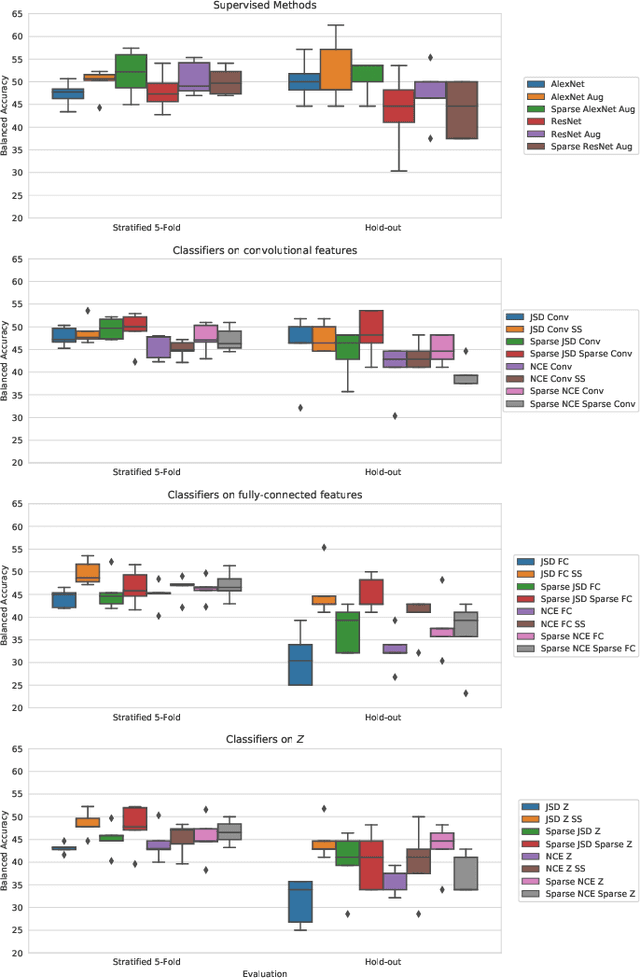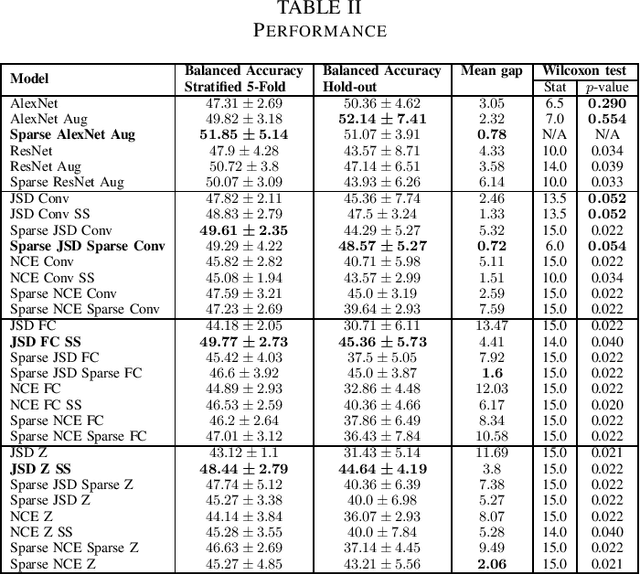Prediction of Progression to Alzheimer's disease with Deep InfoMax
Paper and Code
May 01, 2019

Arguably, unsupervised learning plays a crucial role in the majority of algorithms for processing brain imaging. A recently introduced unsupervised approach Deep InfoMax (DIM) is a promising tool for exploring brain structure in a flexible non-linear way. In this paper, we investigate the use of variants of DIM in a setting of progression to Alzheimer's disease in comparison with supervised AlexNet and ResNet inspired convolutional neural networks. As a benchmark, we use a classification task between four groups: patients with stable, and progressive mild cognitive impairment (MCI), with Alzheimer's disease, and healthy controls. Our dataset is comprised of 828 subjects from the Alzheimer's Disease Neuroimaging Initiative (ADNI) database. Our experiments highlight encouraging evidence of the high potential utility of DIM in future neuroimaging studies.
 Add to Chrome
Add to Chrome Add to Firefox
Add to Firefox Add to Edge
Add to Edge